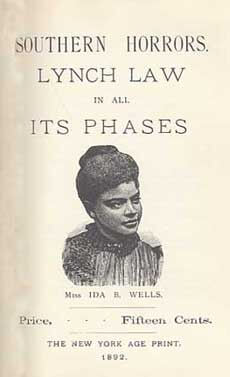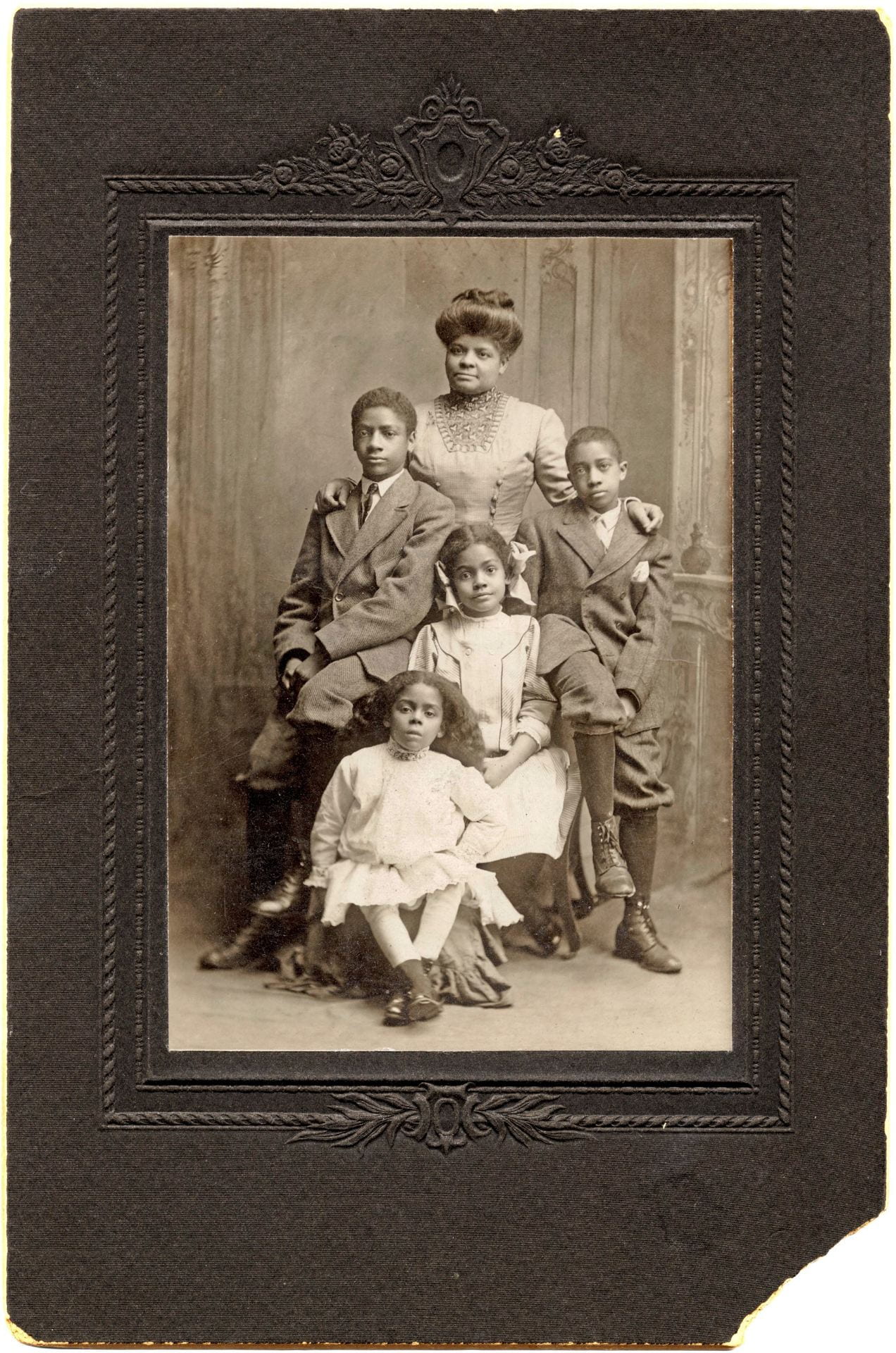Ida B. Wells was born enslaved in 1862 in Holly Springs, Mississippi. During the Fall of 1878, Wells lost both of her parents and one sibling due to the yellow fever epidemic that was going around during this time. She became the primary caregiver to five brothers and sisters just at Sixteen Years Old. While being the caregiver to her siblings, Wells was also working as a teacher, as well as attending school at Rust College. During her time at Rust College, she discovered her passion for writing. In 1882, Wells moved to Memphis, Tennessee, where her career as a journalist would begin. She became co- owner of a local newspaper, where she wrote passionate editorials and conducted in- depth investigate work to shine a light on the widespread acts of lynchings in the South. The remarkable thing about Ida B. Wells is that she knew speaking out against lynchings would put a target on her back and knowing this, she did it anyways.
James, was involved with the Freedmen's Aid Society and helped establish a college for newly freed Black Americans in Holly Springs called Shaw University. Shaw University was renamed Rust College in 1892, this school would join the ranks of a growing number of HBCU'S (Historically Black Colleges and Universities) formed during this period. Theses schools have been important to the Black community - even to this day in society. HBCU'S were places that, for years, were the only institutions that Black people could count on for higher education. Given her fathers work, Wells grew up around Black folks who were trying to build a better, society for her people.

In 1883, Wells, purchased a first-class train ticket for a ride from Memphis to Woodstock, Tennessee but the train crew ordered her to move to the car reserved for African Americans. However, Wells did not leave the first-class car voluntarily. The conductor and some passengers, forcibly removed her and then kicked her off the train. Therefore, won a $500 settlement in a circuit court case; the decision was later overturned by the Tennessee Supreme Court in 1887.

While Wells was working as a journalist, she became a teacher at a segregated public school in Memphis, Tennessee. That first-hand experience led her to begin writing about educational inequality, and this time under her own name. As a result, in 1891, after publicly criticizing the lack of resources for Black-only schools in the area, she was fired. The following year, her efforts as a journalist refocused on the lynching problem in the South after she lost three of her friends
Wells Editorials and reports angered many local Whites. Although she wanted to make waves, she understood that to be effective, she needed to stay alive in which she published many articles in Black newspapers and periodicals under the moniker "lola".


In 1895, Wells published "The Red Record", which outlined the horrors of lynching to the Northern audience. Wells did not think the Northern audience was fully aware of everything that was going on in the South, writing that thousands of Black people had "been killed in cold blood… without the formality of judicial trial and legal execution."She used the pamphlet to challenge the "rape myth" that Whtes used to justify the lyching of African Americans men. A significant component of the culture of lynching the idea of protecting White womanhood from Black men who were stereotyped as being over sexualized and always waiting for their chance to sexually attack a White Woman.
Countless Black men were lynched after being wrongfully accused of raping, assaulting, eyeing, or even speaking to a White Woman. Wells Research, revealed that many victims of lynching had not committed any crimes at all, but had rather challanged White supremacy. Challenging White supremacy could include anything from being a Black person simply leading a successful life as a business owner, to refusing to cross the street when passing a White person. According to the Equal Justice Initative, more than 4,000 Black Americans were lynched in the South alone, between 1877 and 1950. *This is only the numbers that we know there is every reason to believe that the numbers could be even higher than that

Wells Anti - Lynching Campaign brought International attention to the omnipresent threat of violence plaguing Black Americans in the South - and in other parts of the United States. Her carrier would also lead her to one of the founding members of the National Association for the Advancement of the Colored Women(NACW) and the National Association for the Advancement of Colored People (NAACP). Her work was Invaluable in the early struggles for Black Americans Civil rights, and she helped lay the groundwork for generations of Black activists and journalists who would come after her.
Lynching, or killing by way of mob without a trial, became a common form of retribution in the South as a means of administering vigilante justice absent of due process. These acts of violence took many forms, perhaps most infamously hanging a person from a tree.These acts were designed to inspire fear and were used as an intimidation tactic against African Americans to assert social, political and economic control. Lynchings could and often did take place, without the victim having been charged with any sort of crime.Even if someone had been charged with a crime, a vigilante mob kidnapping someone in the middle of the night and killing them, is not justice, no matter what the accusation. Unfortunately, Black Americans in the South had to live with the looming threat that such violence could happen to them or their family at any given moment. People were scared to speak out against lynching - This would put a target on their back.
Ida B. Wells used her writing, research, and unrelenting commitment to become one of the most important anti lynching advocates in American history. In October of 1892, she published a pamphlet entitled " Southern Horrors," which detailed all of her findings. Wells stayed in the North and never returned to Memphis. Although she did not return to Memphis this did not keep her from writing about the horrors of lynching in the South. Wells also took her research and anti - lynching campaign across the Atlantic, specifically to Great Britain during the 1890's. She helped established the British Anti - Lynching Society in 1894. Her work on the trans-Atlantic anti-lynching circuit demonstrates the ways African Americans women activists internationalized social justice work.

Wells had completed much of her life's work before marrying in 1895, to an attorney and newspaper editor Ferdinand L. Barnett. The couple would have four children. Even after starting a family, Wells believed the work was not done. In 1896, Wells was among the founding members of the National Association of Colored Women . The founding convention was held in Washington, DC and other founding members included Harriet Tubman, Frames EW Harper, and Mary Church Terrell. Wells kept going in 1898, she took her anti-lynching campaign to the White House. She led a protest in Washington, DC calling for President William McKinley to make reforms. She also called for President Woodrow Wilson to end discriminatory practices in government jobs. Throughout the remainder of her life she was incredibly active in the fight for Women's suffrage. A determined woman in every respect, Ida B. Wells is one of America's greatest heroes. She had the determination and the bravery required to stand against one of the darkest elements of America's past and in many ways helped lay the groundwork for both the civil rights movement of the mid 20th century and the Black Lives Matter Movement of today. Her life's work was dedicated to stopping the unjust murdering of Black Americans in the South, a practice that, due to the widespread profoundly entrenched influence of the Klan, was often protected by law enforcement and legal policies.